Kilimanjaro packing list
Mount Kilimanjaro packing list
What should you wear on Kilimanjaro? What equipment do you need? You must remember that you are going to experience a wide variety of different conditions on your climb, as you transcend various ecosystems and rise to nearly 6,000 metres. When it comes to clothing, the key word is ‘layering’: you should take several breathable layers that ‘wick’ moisture – that is, take the sweat away from your body. Taking several layers will give you the maximum flexibility to adapt to the changing temperatures as you climb.
Below are our top tips on Technical Gear, Technical Clothing, Footwear, Handwear, Headwear, Accessories, First-aid kit, and Documents Required
Technical gear

On an adventure such as climbing Kilimanjaro, it’s important that your climb is as comfortable as possible. Our packing list is essential reading, to make sure your bags are the right shape, size and condition to get you and your stuff up the mountain. At night, you’ll want to stay warm and dry; by day, you might want to use a set of walking poles – so read our advice, check the packing list . On the mountain, having the right technical gear is very important.
1 – Daypack, 30-35L capacity, for you to carry your personal gearThis small pack will let you carry personal items such as your camera, phone, suncream, sunglasses, water, snacks etc
1 – Duffel Bag, 70L-90L capacity, for porters to carry your equipmentA dry bag, to fit inside your daypack, is a great asset to help keep your camera and other essentials dry
1 – Duffel Bag, 70L-90L capacity, for porters to carry your equipmentMake sure your main bag, which will be carried by the porters, is waterproof. Use separate plastic bags to compartmentalise your gear and provide extra waterproofing
1 – Sleeping bag and liner, 4 seasonA four-season sleeping bag is essential, and a fleece sleeping bag liner provides extra comfort and warmth
1 – Walking poles, Pair (Highly recommended)Very useful for Kilimanjaro, especially for summit day and generally for descent. 95% of accidents nappen on the descent
1 – Camp Pillow, inflatable (optional)As the campsites are not on totally level ground, a camp pillow is a good thing to have
Technical clothing
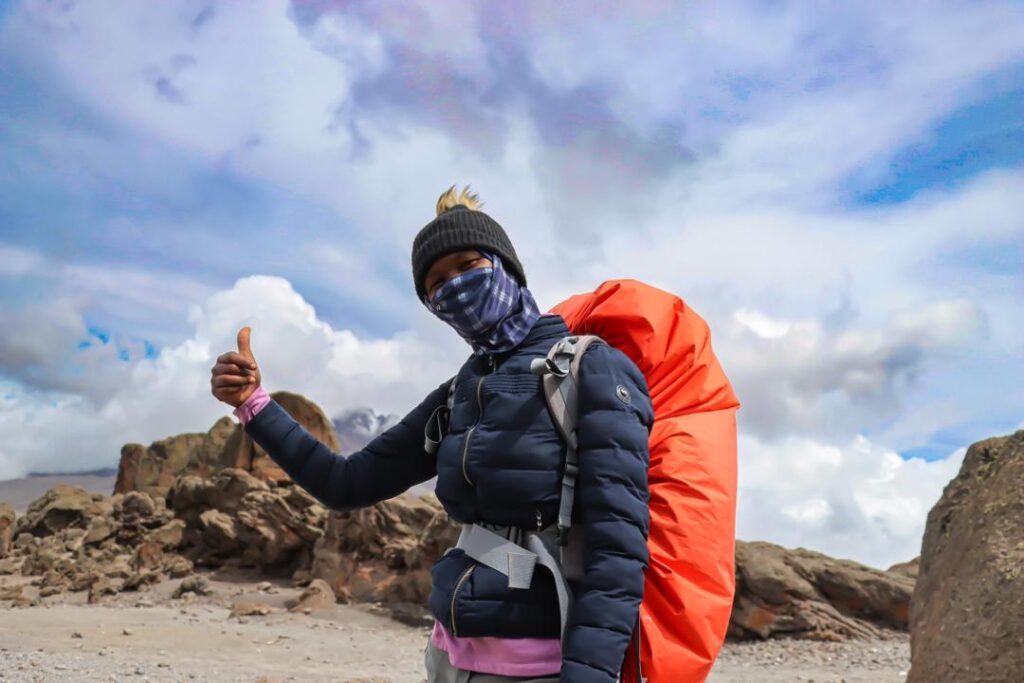
Just as important as your gear is your clothing. Remember that you will encounter a variety of conditions on Kilimanjaro, so be prepared. You will start in warm conditions, but it will get cooler as you climb, so flexibility is the key. Think layers: you can peel them off and put them on, allowing you to adapt with the weather and altitude. Our packing list will point you in the right direction.
1 – Waterproof Jacket, breathable with hoodEssential, as weather can be unpredictable in any season. Makes sure this outer garment is large enough to put over multiple layers of clothing
1 – Soft Jacket, fleece or soft-shellTo keep you dry in light and moderate rain. Best if this garment has a durable, water-repellent outer layer
3 – Long Sleeve Shirt, light-weight, moisture-wicking fabricThe moisture-wicking qualities will ensure that your shirts can be dried quickly, should they get wet
1 – Short Sleeve Shirt, light-weight, moisture-wicking fabricThe moisture-wicking qualities will ensure that your shirts can be dried quickly, should they get wet
1 – Waterproof Pants, breathable (side zipper recommended)These are useful, not just against the rain, but also against the wind
2 – Hiking Pants (Convertible/Zip-off and quick dry recommended)Two pairs of these quick-drying, convertible garments are recommended.
1 – Fleece PantsThese are ideal for use when you are in camp, but also as an extra layer on summit night
1 – Shorts (optional)These can be useful in the warmer temperatures at lower altitudes
1 – Long Underwear, moisture-wicking fabricAgain, these can be useful in camp, or for ‘layering’ on summit night/
4 – Underwear, moisture-wicking fabric recommendedEasy-to-dry versions are best; bring one pair for every two days
3 – Sport Bra (women)These are comfortable when walking. Easy-to-dry fabric is recommended
Footwear
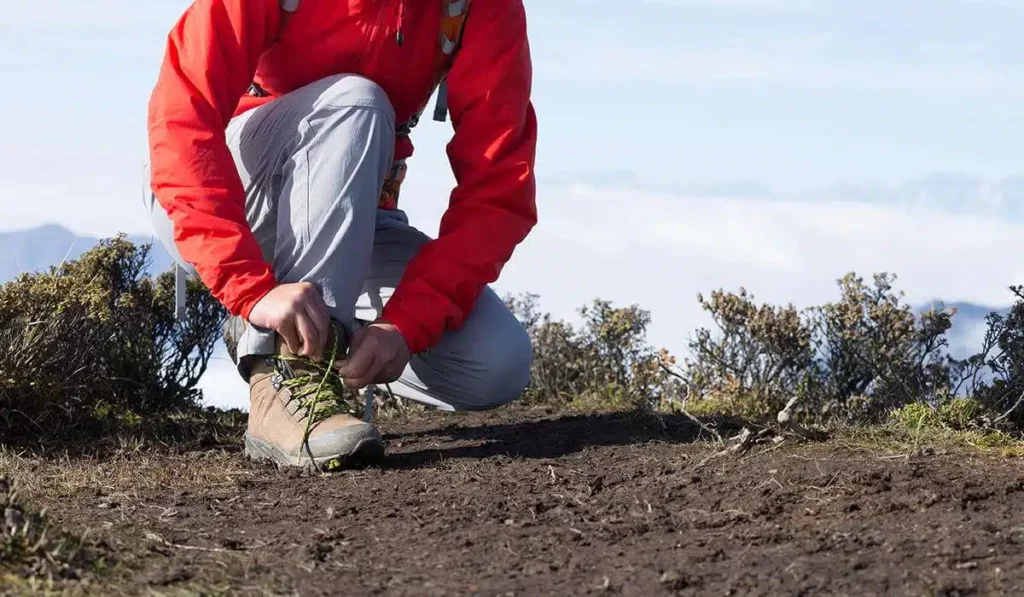
Every time your feet hit the ground, your choice of footwear will seem important. Lightweight waterproof boots are essential, worn-in and guaranteed to be comfortable before you arrive. In the evening, you’ll want to relax in camp, with some more casual footwear. And don’t forget the importance of good socks, gaiters and maybe crampons… after all, your feet are what will get you up the mountain!
1 – Waterproof lightweight hiking boots (required)Boots should provide good ankle support, especially important for the descent from the summit in loose scree
8 – Socks, wool or synthetic4 pairs should be enough (you can ‘rotate’) but include an extra-thick woollen pair for summit night
1 – Gaiters, waterproof (optional)These can be useful in muddy sections and when walking on the summit screen
1 – Trainer shoes (to wear around camp)Light, comfortable trainer/tennis shoes are great for wearing in the camp
1 – cramponsCrampons are useful when walking on slippy glaciers
Handwear
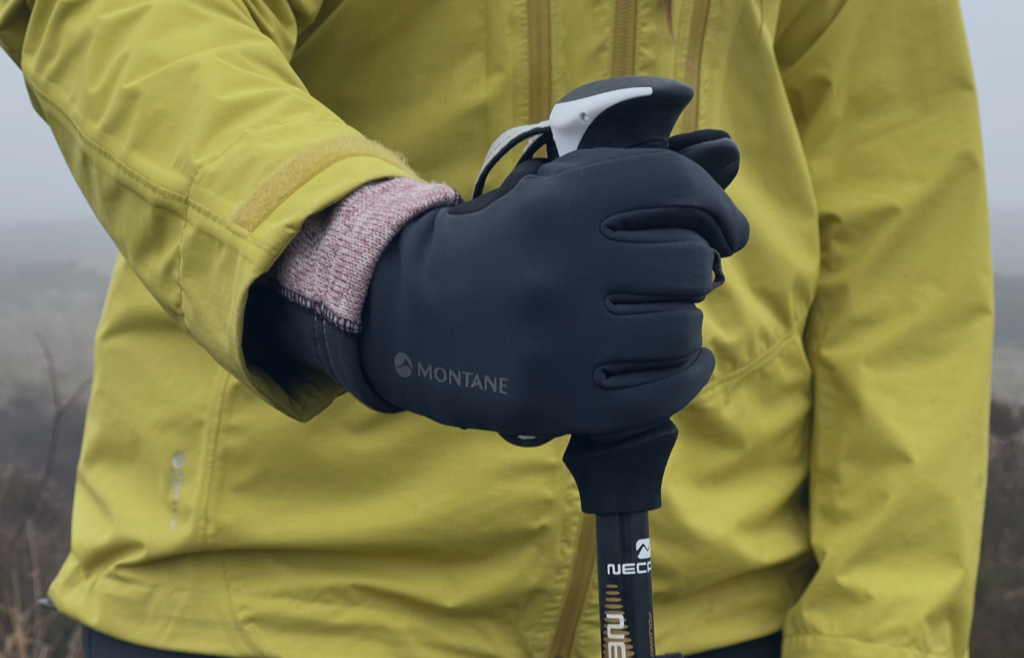
Every time your feet hit the ground, your choice of footwear will seem important. Lightweight waterproof boots are essential, worn-in and guaranteed to be comfortable before you arrive. In the evening, you’ll want to relax in camp, with some more casual footwear. And don’t forget the importance of good socks, gaiters and maybe crampons… after all, your feet are what will get you up the mountain!
1 – Gloves, warm (waterproof recommended)A pair of good, waterproof ski-gloves is particularly useful at high altitudes and the summit attempt
1 – Gloves, lightA lighter pair of thinner gloves can assist by providing extra grip on rocky sections
Headwear
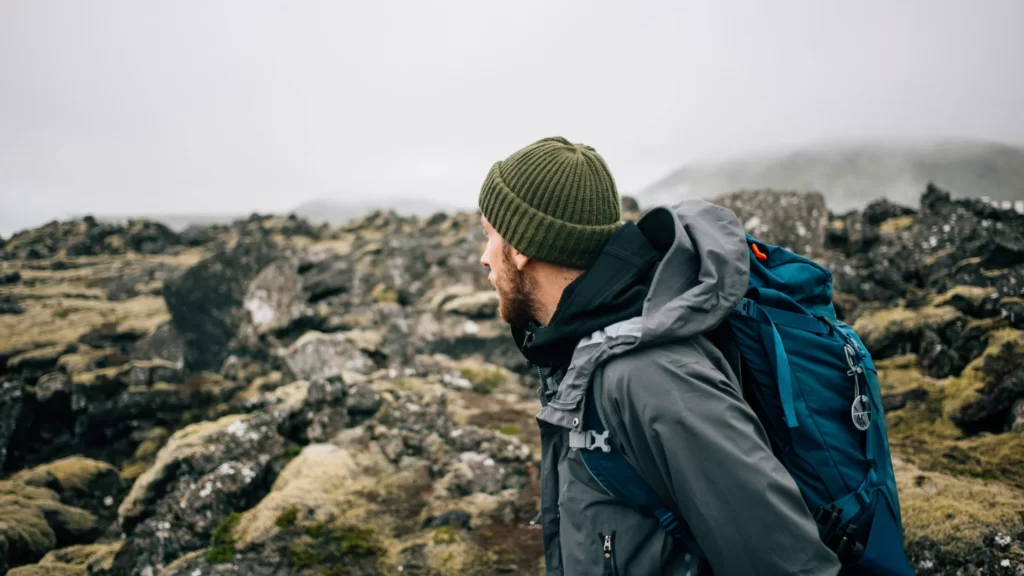
And what is true for the hands, is just as true for the head – keep your head warm, keep it protected. On the lower slopes, a brimmed hat keeps the sun away; higher up, you need to guard against the cold. A scarf and a buff are also recommended. Read our packing list, to make sure you look after your head!
1 – Brimmed Hat, for sun protectionThis type of hat, with a brim, will protect against the strong sun
1 – Knit Hat, for warmthA knotted hat will keep hikers warm, especially useful at camp
1 – Balaclava or Buff (recommended)A balaclave or buff protects against the cold wind and dust. Very useful on summit night
1 – ScarfA scarf (or buff) protects against the cold wind and dust. Very useful on summit night
For those with robust joints (especially knees), jogging or running is the best cardiovascular exercise you can get. There is no need to have any special equipment, apart from good-quality, supportive shoes, so it is low-cost and you can go straight from your front door! But the downside is that every time you put your foot down with all your bodyweight on it, you are putting a lot of strain on your ankles and knees. If you have any slight weakness in these vital joints, then jogging or running will find it out and therefore you should avoid this otherwise excellent activity.
If that, is you, then you should consider activities which are low or no-impact.
First-aid kit
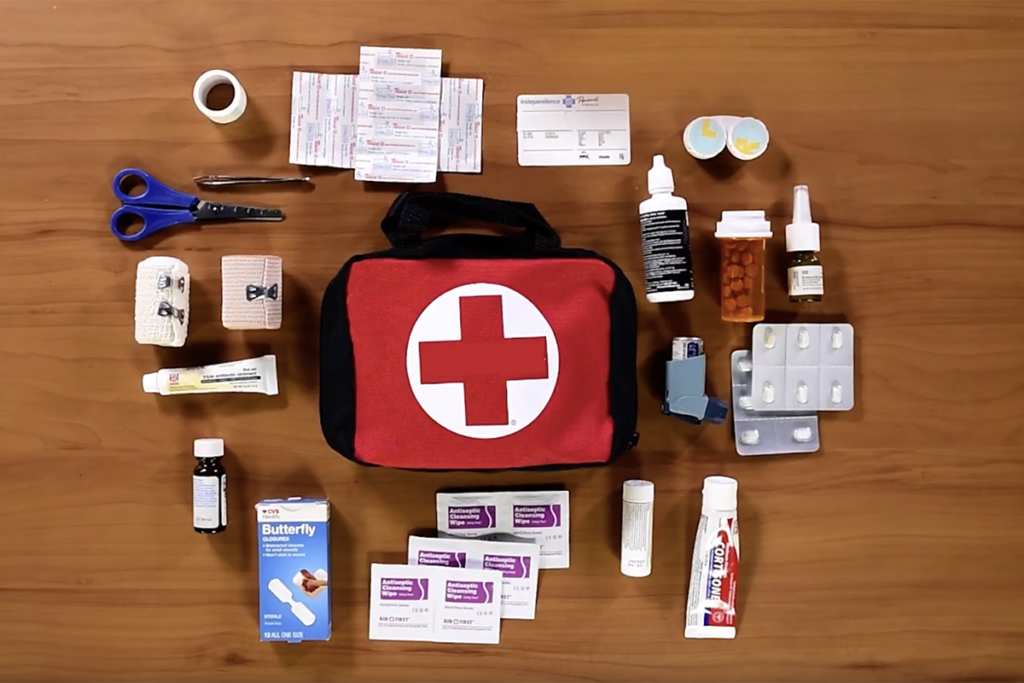
Cycling is another cardiovascular alternative, very popular though it does have its disadvantages. First of all, you will need a reliable bike, which can be expensive, and secondly you will need somewhere pleasant to cycle. If you live in a city or other built-up area, sharing your route with motor vehicles can take the shine off what might otherwise be a pleasant cycle ride.
Mountain footwear

Safety is always our priority, and our guides are trained and equipped to handle any crisis. But you should have your own first-aid kit for any minor ailments or irritations. Our packing list will advise you what to put in your kit.
AspirinAspirin is used to reduce fever and relieve mild to moderate pain from conditions such as muscle aches, toothaches, common cold, and headaches. It may also be used to reduce pain and swelling in conditions such as arthritis. Aspirin is known as a salicylate and a nonsteroidal anti-inflammatory drug (NSAID).
IbuprofenIbuprofen is used to relieve pain from various conditions such as headache, dental pain, menstrual cramps, muscle aches, or arthritis. It is also used to reduce fever and to relieve minor aches and pain due to the common cold or flu. Ibuprofen is a nonsteroidal anti-inflammatory drug (NSAID).
Plasters Are used for wound treatment or for treating disturbances in moveable joints. Medical plasters can not only be used for treating wounds, but also for holding wound covers, stabilising joints and covering puncture points.
Tape Medical Tape – is an adhesive tape that is specifically designed to be used directly on skin to hold wound bandages or other first aid or medical appliances in place. Medical tape needs to be skin safe, easy to use, and strong enough to work well when skin is moving, bending, or damp
Anti-histamines Are used to relieve or prevent the symptoms of hay fever and other types of allergy. They work by preventing the effects of a substance called histamine, which is produced by the body. Histamine can cause itching, sneezing, runny nose, and watery eyes.
Antibacterial gel/wipes These help to kill germs
Antiseptic cream soothes and heals wounds, protects against infection and can be used to treat cuts and grazes, minor burns and scalds, small areas of sunburn, dry chapped skin, nappy rash, insect bites, spots and pimples. You can use this medicine if you are pregnant or breastfeeding.
Imodium This is used to treat sudden diarrhea (including traveler’s diarrhea). It works by slowing down the movement of the gut. This decreases the number of bowel movements and makes the stool less watery. Loperamide is also used to reduce the amount of discharge in patients who have undergone an ileostomy.
Rehydration powder Oral rehydration therapy (ORT) is a type of fluid replacement used to prevent and treat dehydration, especially that due to diarrhea. It involves drinking water with modest amounts of sugar and salts, specifically sodium and potassium. Oral rehydration therapy can also be given by a nasogastric tube.
Water purification tablets Are primarily used to kill microbiological contaminants such as bacteria, viruses, and parasites
Insect repellent These are used to repel mosquitoes, ticks, flies, and other biting insects
Sewing kit Needle and thread, spare buttons
Documents
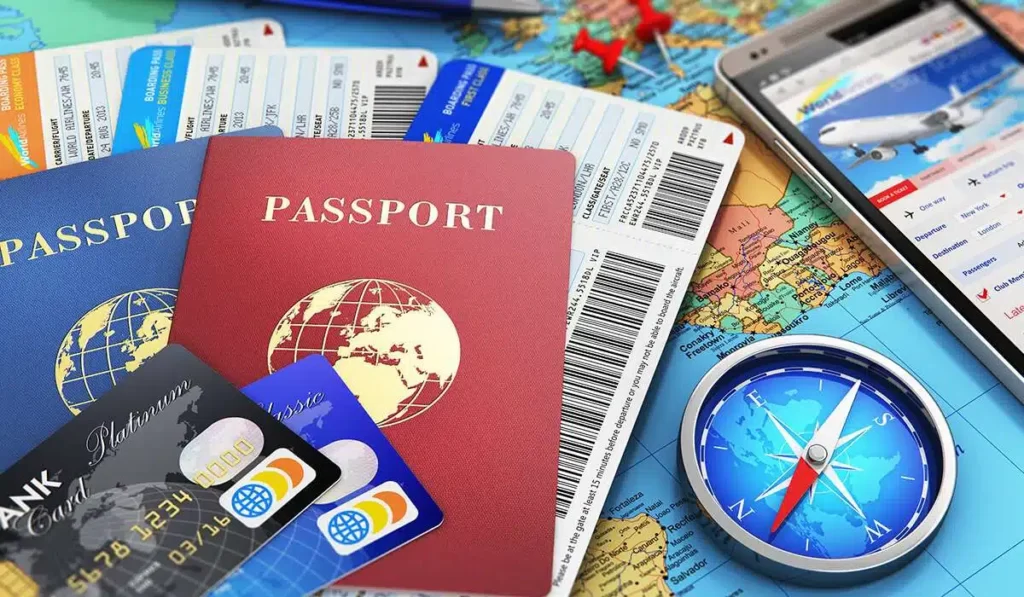
Last but not least, remember that all-important paperwork. Don’t spoil your trip by forgetting your passport, visa or other vital documentation – your trip could be over, before it has even started.
Flight informationPrintouts of e-tckets may be required when you arrive, or at the airline check-in when you depart
Insurance information, with a separate photocopyThis is essential, in the event of an incident. We need to know the name of the insurance company, their contact details and your policy number
Passport, with separate photocopyThis is essential, to allow you to be registered at the Kilimanjaro Park Gate. We will also need it, should we have to contact your insurance company
Any necessary visas or vaccination certificates, with photocopiesYou require both of these at immigration when entering Tanzania
Trip ItineraryYou should bring this, together with the Easy Travel office contact details, in case your arrival flight is delayed, or should you not be able to find our Easy Travel representative at the airport
